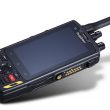Firetide announces Chicago video-surveillance deployment
Wireless networking vendor Firetide today announced that it has completed the first deployment phase of a network that is part of the city of Chicago’s Operation Virtual Shield, one of the world’s largest video-security systems.
“It is probably the largest high-resolution wireless video surveillance that has ever been done in the world, so far,” Firetide CEO Bo Larsson said during an interview with MRT. “We have hundreds of cameras deployed at the moment, but the deployment will continue and get much larger than it is now—and it’s already very large.”
Headed by system integrator IBM for the city of Chicago’s Office of Emergency Management and Communications (OEMC), the Virtual Shield project is designed to provide video surveillance throughout the city. Video from initial cameras in the network was transmitted to OEMC headquarters via a vast fiber network throughout downtown Chicago, but wireless connections were needed to expand the network.
“They had some wired infrastructure cameras prior to this, but to cost-effectively scale up to hundreds of cameras—and maybe later, to thousands of cameras—gets extremely expensive with a wired infrastructure and very disruptive to the city, obviously,” Larsson said. “[Wirelessly transmitted video] is exactly the same video quality, which is great considering that there’s 10 times less cost to deploy it.”
Firetide’s 4.9 GHz mesh-networking wireless infrastructure already has been deployed to support hundreds of surveillance cameras in a Chicago area covering more than 5 square miles. Firetide’s system lets the mesh nodes determine the best available routing links to use, whether they are the city’s wireless network or its fiber network, Larsson said.
“Some cameras are going wirelessly all the way back to OEMC. In some cases, they are tapping into the fiber that does exist,” he said. “At the end of the day, it’s really a mixed network.”
Eventually, Larsson believes the Chicago network will support thousands of surveillance cameras wirelessly. The Firetide technology provides enough bandwidth to also support data and VoIP applications in the future, if the OEMC wants them, Larsson said. Firetide also has demonstrated its ability to support mobile video with its Boston deployment, so adding mobility features to the Chicago network would be “natural next step,” he said.












